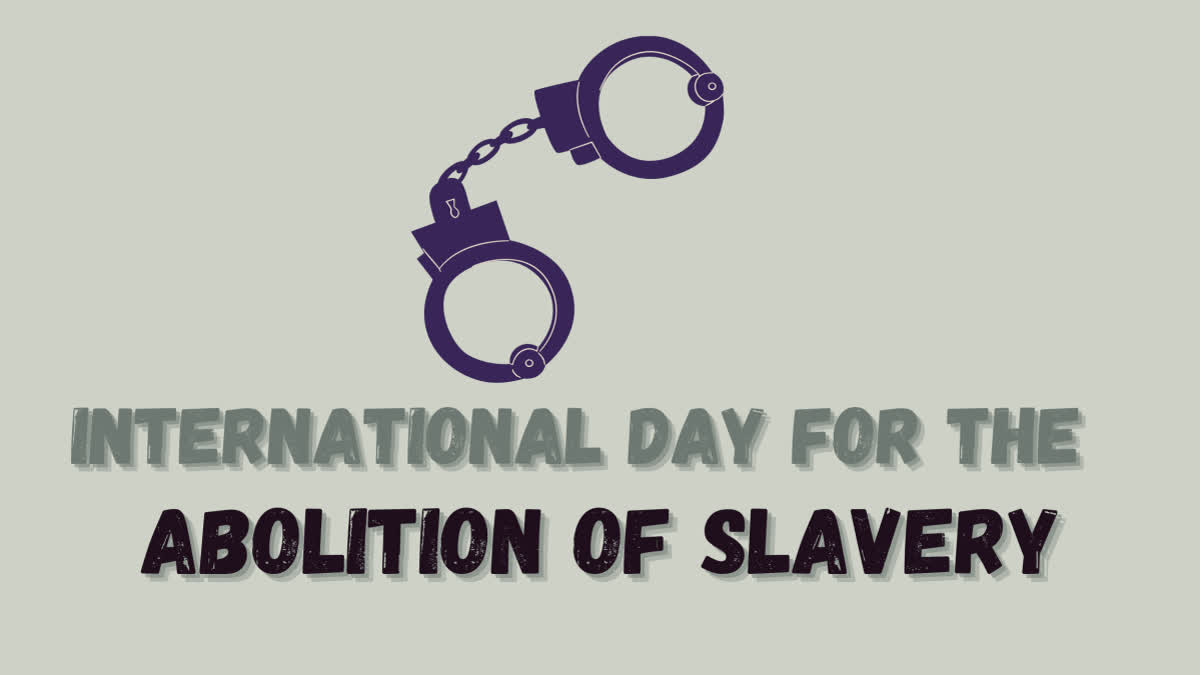New Delhi: International Day for the Abolition of Slavery is an important global event observed annually on December 2, focusing on eradicating modern forms of slavery, raising awareness about human trafficking, and promoting the rights and dignity of all individuals, especially those who have been victims of slavery.
History & Significance
The International Day for the Abolition of Slavery marks the date of the adoption, by the General Assembly, of the United Nations Convention for the Suppression of the Traffic in Persons and of the Exploitation of the Prostitution of Others (resolution 317(IV) of 2 December 1949).
“The focus of this day is on eradicating contemporary forms of slavery, such as trafficking in persons, sexual exploitation, the worst forms of child labour, forced marriage, and the forced recruitment of children for use in armed conflict,” an UN resolution said.
What Is Slavery?
Slavery has evolved and manifested itself in different ways throughout history. Today, some traditional forms of slavery still persist in their earlier forms, while others have been transformed into new ones. The UN human rights bodies have documented the persistence of old forms of slavery that are embedded in traditional beliefs and customs. These forms of slavery are the result of long-standing discrimination against the most vulnerable groups in societies, such as those regarded as being of low caste, tribal minorities and indigenous people.
Different Forms of Slavery
There are different forms of slavery that include forced labour, child labour and trafficking. Alongside traditional forms of forced labour, such as bonded labour and debt bondage, there exist more contemporary forms of forced labour including migrant workers among others.
The Amnesty International have distinguished slavery in to six categories including forced labour, sexual slavery, child labour, bonded labour, forced marriage and descent-based slavery.
UN Report On Slavery
According to a UN report, globally, one in ten children works. “The majority of the child labour that occurs today is for economic exploitation,” the UN has said. Similarly, victims of trafficking also became slaves in different forms.
According to the Protocol to Prevent, Suppress and Punish Trafficking in Persons Especially Women and Children, trafficking in persons means the recruitment, transportation, transfer, harbouring or receipt of persons, by means of the threat or use of force or other forms of coercion for the purpose of exploitation. Exploitation includes prostitution of others or other forms of sexual exploitation, forced labour or services, slavery or practices similar to slavery, servitude or the removal of organs.
ILO Report
According to the International Labour Organisation (ILO), there were 27.6 million people in forced labour worldwide in 2021. From 2016 to 2021, the number increased by 2.7 million, mostly due to privately imposed forced labour.
“No region is exempt from the problem, with Asia and the Pacific having the highest number (15.1 million), followed by Europe and Central Asia (4.1 million), Africa (3.8 million), the Americas (3.6 million) and the Arab States (0.9 million),” the ILO has found.
It further said that most forced labour takes place in the private sector, with 86% of cases imposed by private sectors-63% for labour exploitation and 23% for sexual exploitation. State-imposed forced labour accounts for the remaining 14%. The main sectors affected are industry, services, agriculture and domestic work, which together account for 89% of forced labour cases.
Condition of Slavery In India
In India, many people work as slave labour in the brick kiln industry including women and children. India has the highest estimated total number of people living in modern slavery globally, and the sixth highest prevalence in the Asia Pacific region.
According to the 2023 Global Slavery Index, India is home to over 11 million slaves, the highest number in any country. Slavery in India manifests in various forms, including forced labor, human trafficking, and child exploitation. Despite the significant strides the nation has made in terms of economic growth and technological advancement, slavery remains deeply entrenched in its societal and economic structures, victimising millions of vulnerable individuals.



